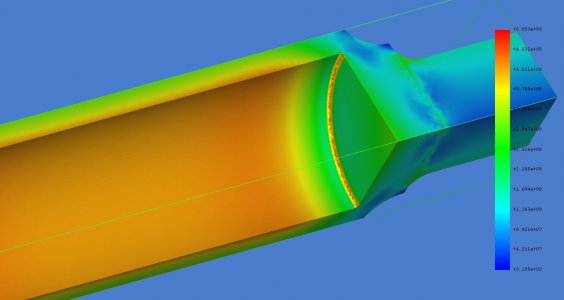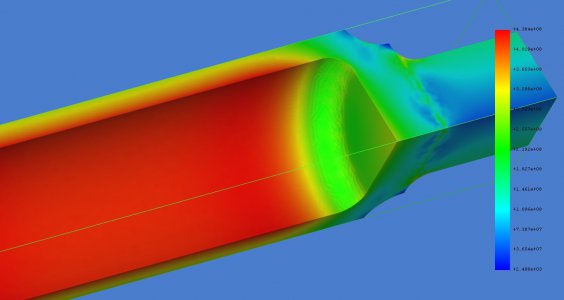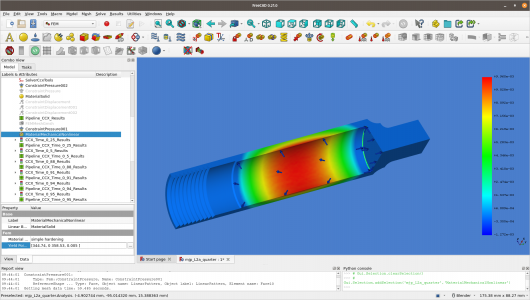- Joined
- Dec 18, 2019
- Messages
- 6,448
Well got a lot of this sorted out, at least the meshing and stuff like that. Now the sims take under a minute. Made a quarter model and fixed the weird meshing, by un-selecting the experimental crap. This tube was made of 2024 either T3 or T5.
Anyways, with a 0.5mm inside corner, and pressurized to 75 MPa (2.5x over nominal) this bad boy is nothing but trouble. The inside of the tube is yielding, and the inside corner is above the ultimate tensile strength of the material, which is not comforting. UTS = 483 MPa, yield = 345 MPa. Nope, nope, nope. Was a fun learning exercise, and gave me an appreciation of what to watch out for!

And a 3.3mm inside corner @ 75 MPa, because I can't help it.

Tube is either at, or just about to yield. Inside of tube yielded, outside is near yield threshold. Not something I'd be interested in placing near my neck or head.
So I guess the answer to my original question, is yes. It seems I can do some of this now.
Anyways, with a 0.5mm inside corner, and pressurized to 75 MPa (2.5x over nominal) this bad boy is nothing but trouble. The inside of the tube is yielding, and the inside corner is above the ultimate tensile strength of the material, which is not comforting. UTS = 483 MPa, yield = 345 MPa. Nope, nope, nope. Was a fun learning exercise, and gave me an appreciation of what to watch out for!

And a 3.3mm inside corner @ 75 MPa, because I can't help it.

Tube is either at, or just about to yield. Inside of tube yielded, outside is near yield threshold. Not something I'd be interested in placing near my neck or head.
So I guess the answer to my original question, is yes. It seems I can do some of this now.


